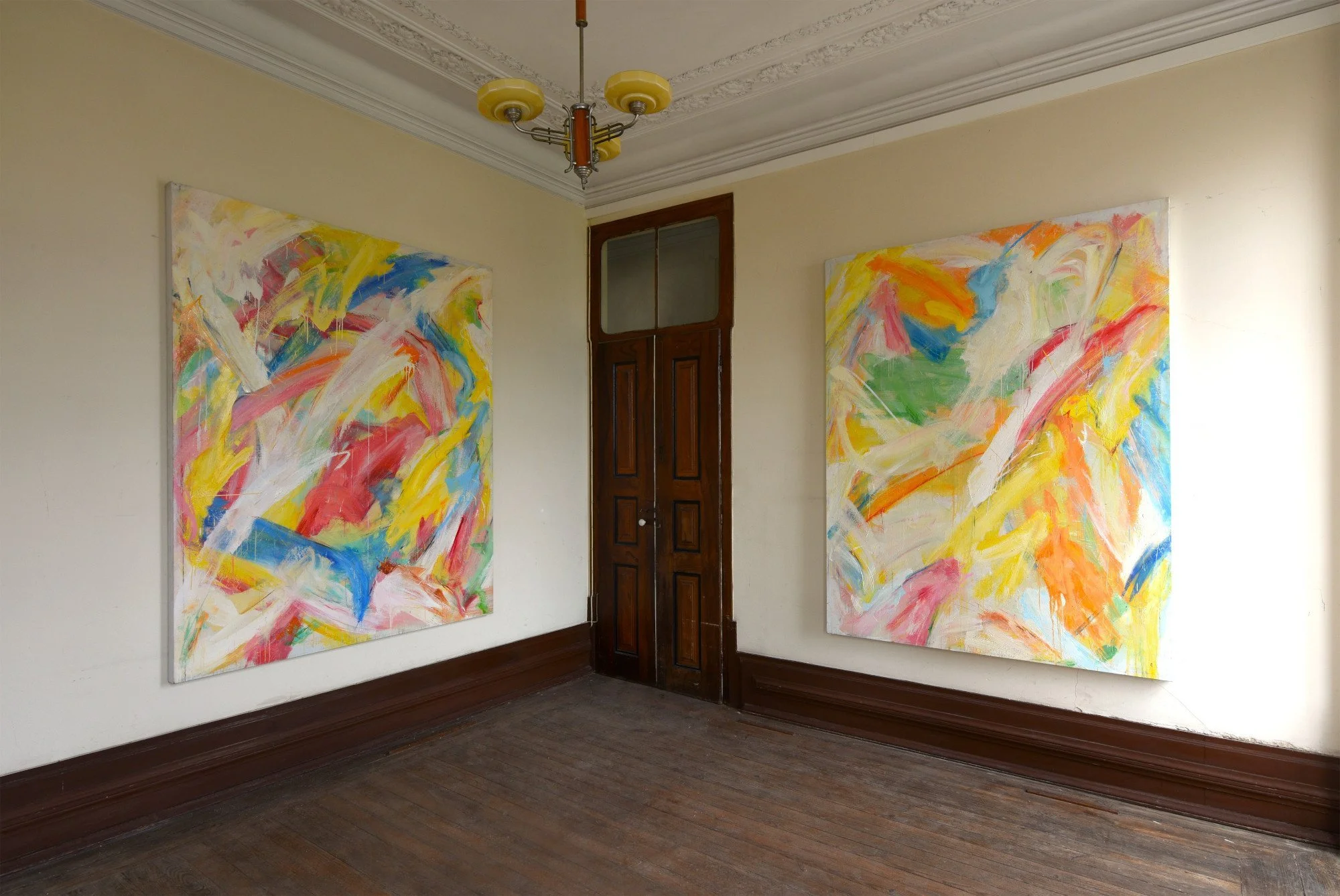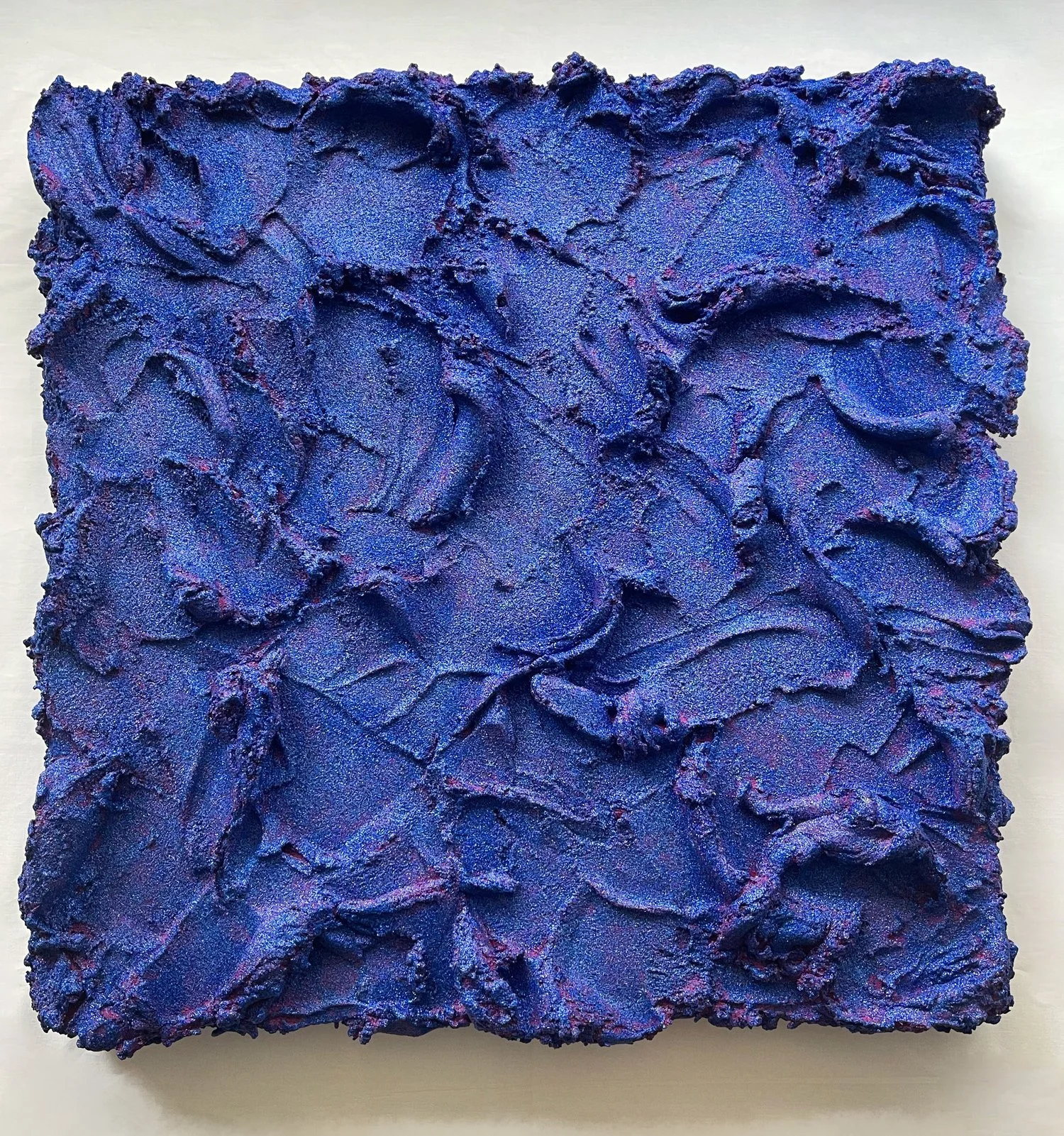10 Questions with Chao Wang
Originally from Hangzhou, China, Chao Wang is an artist who now works from New York. Wang just graduated from the Pratt Institute, New York, in 2020, and she is in the early stages of her career. Nevertheless, she has already exhibited in a number of group shows across New York City, the Indian state, and Canada. Her practice encompasses a variety of different mediums, building upon her works with textured materials to create her transcorporeality world. Her works are characterized by the presence of both organic and artificial elements, in a fusion that explores the human relationship with technology. Chao Wang is interested in how human-being interact with an increasingly technological society, exploring this through intriguing motifs such as cogs and machinery alongside more biological entities that appear similar to microorganisms. Her surrealist paintings depict an unusual world, using images from the past and present to convey her image of the world in the future.
Chao Wang Portrait
ARTIST STATEMENT
As human beings are living in a high technology society nowadays, human activities affect the whole environment. In the pre-scientific era, people explained some situations through supernatural narratives like fairy tales. Wang thinks science fiction is a kind of subconscious, all-sensory response to the existing world from this point in time. In most science fiction, people like to create the majority of science fiction stories that convey large visions of artificial intelligence. But for humans, a large part of the threat doesn’t come from the universal, the giant, and unknown things, but rather from the tiny, microscopic, and seemingly insignificant microorganisms.
Nowadays, people seem less concerned about the future and more concerned with the present. However, the environmental problems that we face today, such as global warming and lack of resources, affect this generation and those that follow.
Therefore, Wang explores the crossovers between painting and science fiction. From the point of view of the microorganism enhanced by artificial intelligence. From the negative space to the positive space. From the familiar element in nature to the object created from the imagination. The idea of science fiction should not be limited to high technology with future scenarios but also from small little things that focus on the current moment.
Get your limited edition copy now
INTERVIEW
First of all, introduce yourself to our readers. You are at the very beginning of your career, just recently graduated. How did you start getting involved with art? And when did you realize you wanted to be an artist?
I am a new-york based artist originally from China. I graduated from Pratt Institute in 2020 with an MFA degree studying painting and drawing. When I was little, I found myself very fascinated by colors. I studied art for two years. Then later on, after I went to high school, I began to study the foundation of art. I knew how to create line, shape, form, space, texture, value, and color. After I graduated from high school, I came to America in 2011. I studied art in school for seven years.
You moved from China to New York to study at Pratt Institute. How did this change influence your work? Do you feel your art is different now that you live in NYC?
When I was in undergraduate school, Western culture affected my influence much more. I like surrealism and cubism. After I went to graduate school, I started to think about how to add eastern culture elements into my works. I am trying to combine eastern fairy tales into western surrealism.
An Insect doesn’t Exist, Oil on canvas, 36x36 in, 2020 © Chao Wang
Wheeling with One Wing, Oil on canvas, 36x36 in, 2020 © Chao Wang
How would you define yourself as an artist? What differentiate you from the others?
It is always hard to find a definition of me as an artist. I think the way how I explore my point of view, try to merge the ideas together, and use a creative way to express the thought, is the path I am following. I don’t want to limit myself by what materials I like to use or what kind of subject I create. I know artists like to categorize their styles by one or two subjects, but it’s hard for me to really put my works into one or two subjects. I am still on my way to discovering the possibility of creating works with different materials, and I am always excited to try something new. The only thing I can say for sure is, I do have a certain style at certain periods. Like the musicians, they build up their albums. Each album has its own vision, own theme. And between different albums, there are connections as well as they represent different visions.
In your paintings, you mix surrealism and science fiction. How did you come up with this idea?
Nowadays, people seem less concerned about the future and more concerned with the present. However, the environmental problems that we face today, such as global warming and lack of resources, affect this generation and those that follow. Therefore, I explore the crossovers between painting and science fiction. From the point of view of the microorganism enhanced by artificial intelligence. From the negative space to the positive space. From the familiar element in nature to the object created from the imagination. The idea of science fiction should not be limited to high technology with future scenarios, but also from small little things that focus on the current moment.
Where did you get your inspiration, both visually and conceptually? Are there any artists or writers you particularly look up to?
I like reading science fiction novels, and I always build the scenarios in my head when I read these stories. And these sci-fi movies, all these high technology developments make me excited. I see so many possibilities in these movies, and these help me to bring my artwork with any possibility. I find many connections between me and Hilma Af Klint, the way she presented spiritual ideas into her works inspired me in my daily work. Whenever I get stuck on creating something new, I always look at her works, read about her stories, and get to know how she brought these spiritual ideas with solid works.
Untitled 1, Oil on canvas, 36x36 in, 2020 © Chao Wang
In your work, you use both artificial and organic elements. What do these represent for you, and why do you use them together? Do you see them as complementary or opposed?
As human beings are living in a high technology society nowadays, human activities affect the whole environment. In the pre-scientific era, people explained some situations through supernatural narratives like fairy tales. I think science fiction is a kind of subconscious, all-sensory response to the existing world from this point in time. In most science fiction, people like to create the majority of science fiction stories that convey large visions of artificial intelligence. But for humans, a large part of the threat doesn’t come from the universal, the giant, and unknown things, but rather from the tiny, microscopic, and seemingly insignificant microorganisms.
Running from Utopia to the Apocalypse, Oil on canvas, 36x36 in, 2020 © Chao Wang
A Knight in the Sea Garden, Oil on canvas, 36x36 in, 2020 © Chao Wang
In your statement, you touch upon important questions of our times, like the environment. How important are these themes for you and your work? And what would you like the viewers to learn from your works?
As I mentioned before, I have certain styles at certain periods. I am like a narrative storyteller. I feel one or two artworks are not enough to express what I want to tell. Therefore, I always have a theme when I start to create art pieces. Sometimes, there are many other objects along with paintings, such as sculptures and prints. These themes are the reason that I want to create, and artwork is a straightforward way to tell a story visually and much easier to catch the audiences’ attention. I always like the viewers to start a cold read of my works at the beginning, so they can have their options in their mind, then they can read my statement to discover what I would like to tell. I like seeing the different opinions, different reads, and what the viewers may have been confused about at first, then the mystery solved later after they read the statement.
What about the past year? How did the global pandemic impact your work? Did you find yourself reflecting on this subject, or did you avoid it altogether? And did you find any difference in your approach to art now, compared to the pre-pandemic times?
It was a very tough year for every artist. There is barely having the opportunity to exhibit the artworks in the public space (physically). I stopped painting for around half a year because I was so lost, and there was no deadline to push me to finish any works. After a half-year break, I started missing my time at the studio and missing the feeling of using brushes to create. During that time, I was just graduating from school, I started to motivate myself. I read a lot, watched a lot of movies, went to galleries and museums.
Because of the pandemic, I can only work in my tiny studio apartment, I have to work on small-scale work. I started to pay attention to small details and use other materials than the traditional painting materials (during the pandemic, the resource is so limited, and I have to use the materials around me in my daily life).
A Lonely Bird Lives, Oil on canvas, 36x36 in, 2020 © Chao Wang
Over the past 12 months, we have witnessed a growing number of online exhibitions and live events. What do you think of the recent changes in the art world? Do you miss the art world as it was before the pandemic, or do you see more opportunity now?
I see there are many online exhibition opportunities, and I think it is great for the artist to export. I appreciate it. This brings the opportunity to the viewers who cannot make it to the physical exhibitions.
And I do miss the time before the pandemic; I think seeing artwork in person is more engaging. The texture, the scale, the gallery space do empower the relationship between the work and the audience.s
Finally, what are you working on now, and what are your plans for the future? Anything exciting you can tell us about?
Right now, I am working on my upcoming exhibition in Manhattan, and the official launch is on Jan. 12. I am so excited about this exhibition. For the first upcoming 5 years, I think I want to find a good balance between my daytime job as a UI designer and my part-time artist life. I really want to find a way to emerge my daytime into my fine art career.



























